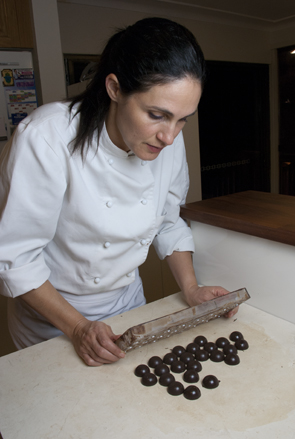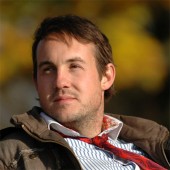Introduction
By 2060 the world needs to double its food production – in a time when all the main things we use to produce food are becoming scarce: land, water, oil, fertiliser, technology, fish, capital and stable climates. The only way we will achieve a sustainable food supply in the mid century is through the greatest knowledge-sharing effort in human history, reaching out to 1.8 billion farmers and food producers globally in real time and at the speed of light.
The goal is achievable. This paper outlines how.
The Virtual Farm
Throughout the history of agriculture most farmers gained most of their farming knowledge from other farmers – rather than from scientists, extension workers, companies, teachers or publishers.
The Virtual Farm is a place where farmers from all regions, nationalities, cultures and climates can meet in real time to share their knowledge with one another at lightspeed, using the internet. These meetings can be ‘face to face’ using the avatar technology now universally employed in internet gaming and scenario development.
The Virtual Farm is a place where farmers can visit one another’s ‘farm’, exchange experiences and ideas, discuss mistakes and try out different farming approaches and methods in a virtual environment, where there are no penalties for failure. Where advanced farmers can share their technology experience with smallholders in developing countries – and smallholders and organic producers can share their own farming wisdom with advanced farmers.
The Virtual Farm is a place where scientists, agricultural input suppliers, advisers, extension workers and farmers can gather for farm ‘field days’ to discuss and learn about new techniques and technologies and again, learn from one another’s mistakes – without leaving their farms, homes or offices.
It is, in short, a continual online worldwide conversation about how to produce more food, more efficiently, healthily, sustainably and safely.
Left: screenshot of a virtual farm in Second Life. The VF version will be more complex, based on real farm planning software.
The VF is open to anyone who farms or who works in the food sector – or, indeed, anyone who eats.
The main barrier to entry is the local availability of the internet – and this can be overcome through aid and philanthropic investment, almost anywhere on Earth.
This conversation can be carried on verbally, in written form, via videolink and through the sharing of data. It is accessible to farmers both literate and non-literate. It enables the sharing of common agricultural knowledge across common language groups globally. Virtual cropping scenario.
The Farm Knowledge Bank
The Virtual Farm contains a library or knowledge bank which aggregates the best available farm extension material and advice from the world’s best agriculture departments, agricultural input corporations, farm advisers and teaching institutions. Whatever is available within countries or internationally now can be aggregated and made searchable to any participating farmer, for free. It will need a very powerful, farmer-friendly search engine.
It can also be an archive of all of the world’s public-domain agricultural science. It will not establish this de novo, but rather by aggregating what is already available on the internet and making it accessible.
This is, in effect, a ‘Library of Alexandria’ of the world’s most trustworthy and up-to-date farming knowledge, technical and scientific information.
It can be coupled with a blogging system which allows individual farmers worldwide to discuss and report their own experiences with different systems, technologies and approaches, thus sharing practical field experience of new (or even old) methods.
Left: Global knowledge hub compiled for the poultry industry. The VF would aggregate similar sites globally.
Who can use it?
Any person with access to the internet can use the Virtual Farm.
It is founded on the ethical principle that human knowledge belongs to humanity and should be freely available to all.
That to solve the massive food challenge that lies ahead, we need to co-operate in knowledge sharing, rather than exploit one another through exclusivity. That new times demand new models for knowledge management and dissemination, not those of the C19th and 20th.
The virtual farm
The Virtual Farm itself is a place where all the best public domain farming software is available, free, for any farmer to use in planning or managing their enterprise. This would include everything from paddock histories and livestock breeding records, fertiliser records, marketing information, farm business management software, farm planning software and, especially, farm modelling software.
This will allow farmers to create virtual models of their own enterprises, large or small, which enable them to test different production scenarios or enterprise combinations and see what they deliver in terms of income and sustainability – without having to first run the risk of a real-life experiment. They can discuss the outcomes online with colleagues, farm advisers and experts.
Left: example of farm planning software
It is also a meeting place, where farmers can gather in groups of shared interest – for example producers of the same crop or commodity, a local catchment group, a group interested in a new crop, technology or farming system, a group interested in co-operative marketing or buying, a group interested in developing links with like-minded farmers (and consumers) all over the world.
These meeting can take place in text, as in the Twitter #agchat sites, as avatars using a suitable program (based on current gaming technology) or via videolinks such as Skype.
With the ubiquitous availability of camera technology in mobile phones, farmers can exchange images and video of actual farming systems and experiences to share their learnings.
The value of mistakes
Most farm extension tends to emphasise the benefits of success – but in reality most farming knowledge is founded on mistakes and what farmers learn from them.
Real-time knowledge sharing allows farmers to compare personal experiences and share them with audiences of dozens, hundreds or thousands of their peers, locally, nationally and globally.
By sharing our agricultural ‘mistakes’ globally and at lightspeed we can potentially dramatically improve farming efficiency and sustainability. This is especially important in cases such as lifting water use efficiency in irrigation systems, preventing soil loss and degradation, improving carbon storage, increasing nutrient efficiency and managing grazing pressure.
In irrigation, for example, the best farmer often achieves up to seven times more food per unit of water than the least efficient farmer. If the ‘secret’ of how this is achieved, and the pitfalls to avoid, can be shared at lightspeed, progress worldwide in saving precious water will be faster.
Speaking with experts
The virtual farm makes the world’s leading technical and scientific experts and farm advisers available, potentially, to farmers all around the world, instead of just within a country or local area.
It enables them to run farmer field days, conferences or group meetings locally – or globally.
It enables agricultural input suppliers to introduce new products, equipment and technologies to producers globally – and received direct farmer feedback on their experiences from different regions and climate zones.
It supplements the crippled agricultural extension services of both developed and developing countries with a new, more rapid and efficient way of sharing knowledge and technical information.
It supplements the crippled agricultural education systems of both developed and developing countries with a new paradigm in education – one where farmers educate one another, facilitated by teachers, farm advisers and technical experts or scientists.
It allows the experts to reach the ‘early adopters’ among farmers much faster – while the R&D is under way – to dramatically reduce ‘lag’ in the >20 year process of developing and adopting a new farming system or technology. It then allows the early adopters to share their experience of new systems and technologies with the other 95% of farmers at a much faster rate and much more widely. It thus telescopes the whole process of knowledge diffusion within agriculture.
The virtual farmer’s market
The virtual farm also allows farmers to buy and sell things globally.
It allows groups of farmers to form internationally to purchase farming inputs in bulk at more affordable prices, thus reducing their on-farm costs.
It allows groups of like-minded farmers to ‘shop around’ for the best corporate customer for their commodity or product and cut the best deal. Such deals could include requiring the purchaser to supply capital or technology for the further development of efficient sustainable agriculture – thus obliging large food companies to take a more active interest and position in sustaining efficient farmers and farming systems, instead of merely exploiting them and the environment that produces the food.
It allows farmers globally to negotiate the sale of their produce and supply it direct to users and consumers, such as restaurants, buying groups or even individual households. This is very important in redressing the current serious erosion of farmers’ market power by global corporations and middlemen, and returning sufficient income to farmers to enable them to safeguard the world’s soils, water, biodiversity and other scarce food resources.
Left: example of an online farmers’ market, where consumers can order low-priced and organic foods direct from producers.
It also allows agribusiness suppliers to network with increasingly large groups of farmers worldwide, rather than one country at a time, so increasing the rate of technology diffusion.
Collateral benefits
Education:
The Virtual Farm has the potential to revolutionise the existing, centuries-old, educational paradigm replacing the pupil-pedagogue-classroom model with one in which people learn in ‘communities of interest’ or profession, worldwide, via the internet.
This does not exclude the teacher, but allows them to evolve into a different role, as guide and facilitator and include other experts such as scientists, farm advisers, agribusiness, finance and technical experts into the ‘virtual classroom’. (In fact the word education is derived from the Latin educo, meaning “I lead out”. Contrary to common practice, it is not derived from intrudo, which means “I thrust in”). The Virtual Farm is all about reaching out to fellow farmers, food producers and specialists.
Right: virtual class in Second Life, with the avatars of real people taking part.
Communication:
The objection will be raised that farmers speak many thousands of different languages, and this too can be pointed out of Facebook, Twitter and SMS (texting). However as people become more accustomed to using these tools for global communication they are also evolving a hybrid language which enables meaning to be shared even though the interlocutors speak different tongues. As “farming” is in a sense already a common language (in that there are common concepts, principles and practices in most regions of the world), it is not hard, over a generation or two to imagine the main language groups used on the Virtual Farm merging into a lingua franca that enables greater dissemination of food knowledge.
Peace:
Since war is usually a product of fear, and fear is often a product of ignorance about other countries and cultures, an ongoing worldwide conversation among farmers can contribute, in no small way, to dispelling tensions, hostilities and misunderstandings. After all, one in five of the world’s people are farmers – and they share many experiences in common.
There is thus an unquantifiable, but real, peace dividend to be reaped from the Virtual Farm. Most recent wars have taken place in regions which are food-land-and-water insecure: conversely there have been virtually no wars in regions which are food secure.
It will be of material value in helping to bridge the gulf between different nations, cultures and creeds, and of bringing humanity to a common focus on one of the greatest challenges to the future existence of civilisation: the sustaining of a food supply sufficient to feed 10 billion people over more than half a century.
Development and prosperity
The antidote to food insecurity is knowledge. The antidote to poverty is knowledge. The antidote to bad government is knowledge.
No country can establish a stable government, or a democracy, if it is food insecure. Food insecurity brings down governments (eg Egypt, Tunisia, Sudan, Rwanda) quicker than almost any other factor. Conversely food security and a successful agricultural system lead to stability, improving governance, development, reduction of poverty and ultimately prosperity. It follows that farming knowledge is the best way to found the stability necessary to govern well.
As most of the world’s very poor are farmers, agricultural knowledge is key to ending poverty and initiating the development cycle. The economic miracles of China and India today are founded originally upon agricultural success which laid the ground for wider industrial and economic progress.
Sharing knowledge among the world’s farmers at lightspeed will make a material contribution to ending global poverty, broadening sustainable development and achieving the MDGs.
Conclusion: towards a new humanity
Universal knowledge sharing in farming and food is one of the great opportunities to unify and harmonise humanity in a century of growing resource scarcity and climatic instability.
The knowledge already exists. It is mostly free. All we have to do is create the vehicle or vehicles to share it – and the technology to do this now exists in the internet and social media.
In the second trimester of a baby’s gestation a marvellous thing happens. The neurons, axons and glia in the embryonic brain begin to connect – and cognition is born. A mass of cells becomes a human being capable of thought, imagination, memory, feelings and dreams.
Today individual humans are connecting, at lightspeed, around a planet – like the cells in the foetal brain.
A higher understanding, and potentially a higher intellect, is being born – capable of tackling and solving our problems at supra-human level, by applying millions of minds simultaneously to the solutions and generating wider, faster consensus on what needs to be done.
It is entirely fitting that agriculture, which first gave rise to civilisation by enabling one person to feed many, should be the place where Homo sapiens reinvents itself as a wiser being.
Ends
NOTE: The ideas expressed in this document are personal views, and not those of any corporation, government, organisation or creed. If you share this ideal and have ideas, skills or funds to make it a reality, I’d love to hear from you.
Julian Cribb
(Author of “The Coming Famine: the global food crisis and what we can do to avoid it”)
Julian.cribb@work.netspeed.com.au





